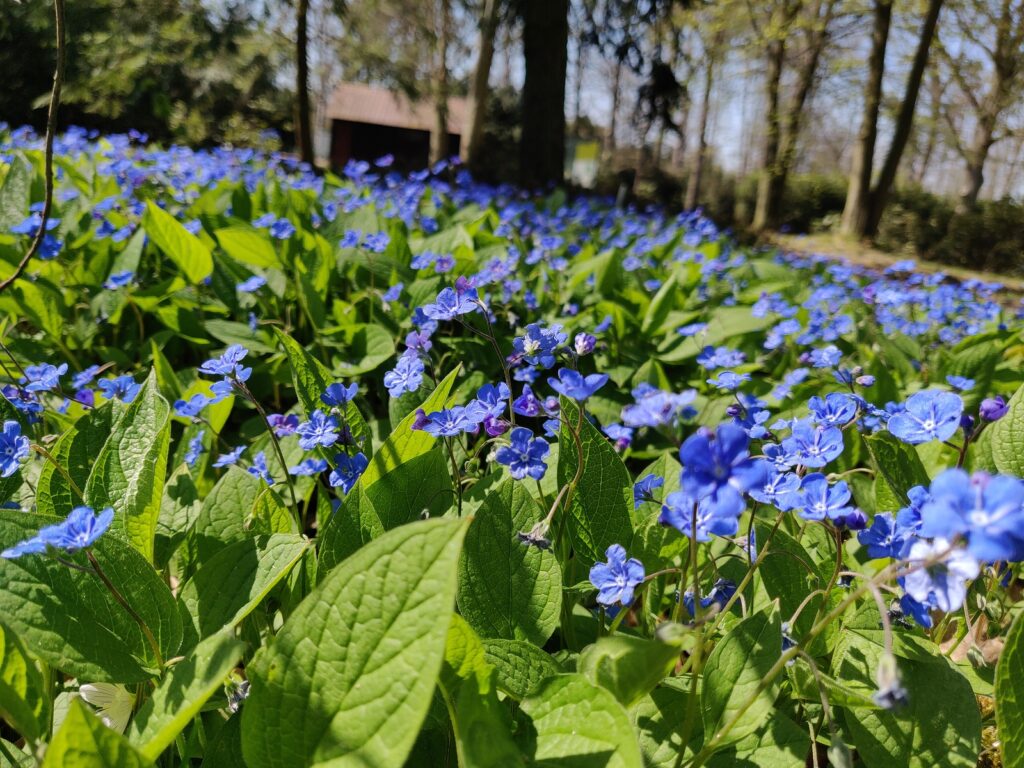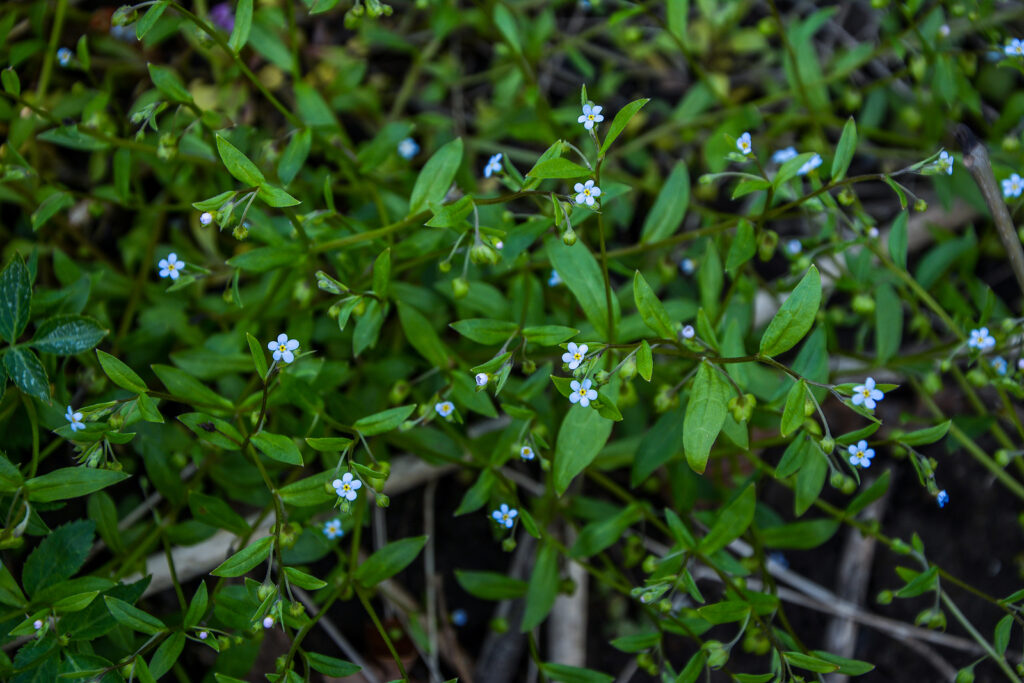Omphalodes, also known as blue-eyed Mary, is a low-growing ground cover perennial that is relatively easy to grow. Omphalodes is also known as creeping forget-me-not and navel-wort. It is a low-maintenance plant that can add a splash of color to shady areas in the garden or in containers.
Omphalodes has attractive foliage and delicate flowers. It belongs to the genus Boraginaceae and is native to woodlands, grasslands, and rocky areas in Europe and Asia.
Omphalodes plants have rounded, heart-shaped leaves that range in color from green to silver-gray, depending on the species. The flowers are small and bell-shaped, typically blue or purple in color, and grow in clusters on slender stems.
Omphalodes bloom in the spring and early summer, attracting pollinators including bees and butterflies. These plants are popular in gardens as ground cover or in rockeries, as they are easy to grow and propagate. Omphalodes prefer swell-drained soil and partial shade, and can be easily divided and transplanted to create new plants.

Get to know Omphalodes
- Plant type: Perennial ground cover
- Growing zones and range: Zones 6 to 9
- Hardiness: Will die back in a freeze
- Height and width: 12 to 18 inches tall and as wide
- Foliage:Simple, oblong to ovate leaves
- Flowers: Small, bell-shaped flowers in shades of blue, purple, or white
- Bloom time: Spring or early summer
- Uses: Ground cover, container plant
- Common name: Blue-eyed Mary
- Botanical name: Omphalodes
- Family name: Boraginaceae
- Origin: Europe, northern Africa, Asia, Mexico
Where to plant Omphalodes
- Omphalodes grows best in partial shade to full shade, although some varieties can tolerate full sun. Avoid planting them in direct sunlight, as this can cause the leaves to scorch.
- Omphalodes prefers well-draining, slightly acidic soil. Amend heavy clay or sandy soil with compost or peat moss to improve drainage and fertility.
- Light outdoors:
- Use Omphalodes to fill in shady areas of the garden where other plants may struggle to grow.
When to plant Omphalodes
- Plant Omphaloides in the spring or fall.
Planting and spacing Omphalodes
- Space Omphalodes 8 to 12 inches apart. Dig a hole that is slightly larger than the root ball and backfill with soil, making sure the plant is at the same level as it was in the pot. Water thoroughly after planting.
- Place the plant in the hole at the same depth it was in the pot.
How to water and feed Omphalodes
- Omphalodes wants soil that is consistently moist (but not waterlogged), especially during the hot summer months. Avoid letting the soil dry out completely, as this can cause the plant to wilt and die.
- Omphalodes typically does not require regular fertilization, but you can apply a balanced, slow-release fertilizer in the early spring to promote healthy growth.

Omphalodes care
- Mulch around the base Omphalodes to help retain moisture and suppress weeds. A layer of organic mulch, such as shredded bark or compost, can also help improve soil fertility.
- Omphaloides does not require much pruning. You can remove any dead or damaged leaves to keep the plant looking tidy. Trim back omphaloides plants after flowering to maintain a tidy appearance and encourage new growth.
Omphalodes pests and diseases
- Omphalodes is relatively resistant to pests and diseases, but you may occasionally encounter issues such as slugs, snails, or powdery mildew. Handpick pests, and treat mildew with a fungicide if necessary.
Omphalodes propagation
- Omphalodes can be propagated by division or by seed. Divide established plants in the spring or fall, and sow seeds in the fall for germination the following spring.
- To propagate Omphalodes by division. Simply dig up a clump of the plant and separate it into smaller sections, each with roots attached. Replant the divisions in a new location or give them to friends and family. Division is best done in the spring or fall.
- Omphaloides can be propagated by collecting and planting seeds.
Omphalodes varieties to grow
- Omphalodes cappadocia: slow-spreading ground cover grows to 18 inches wide and about 12 inches high; bears sprays of bright blue, white-eyed flowers in spring; cultivar ‘Lilac Mist’ and ‘Starry Eyes’ are available.
- O. linifolia, called Venus’s navelwort, grows 12 to 18 inches tall with white or pale-blue flowers.
- O. verna, called blue-eyed Marty, grows 8 inches high and 3 feet wide; bears clusters of deep blue flowers with white eyes; cultivar ‘Alba’ has white flowers.















